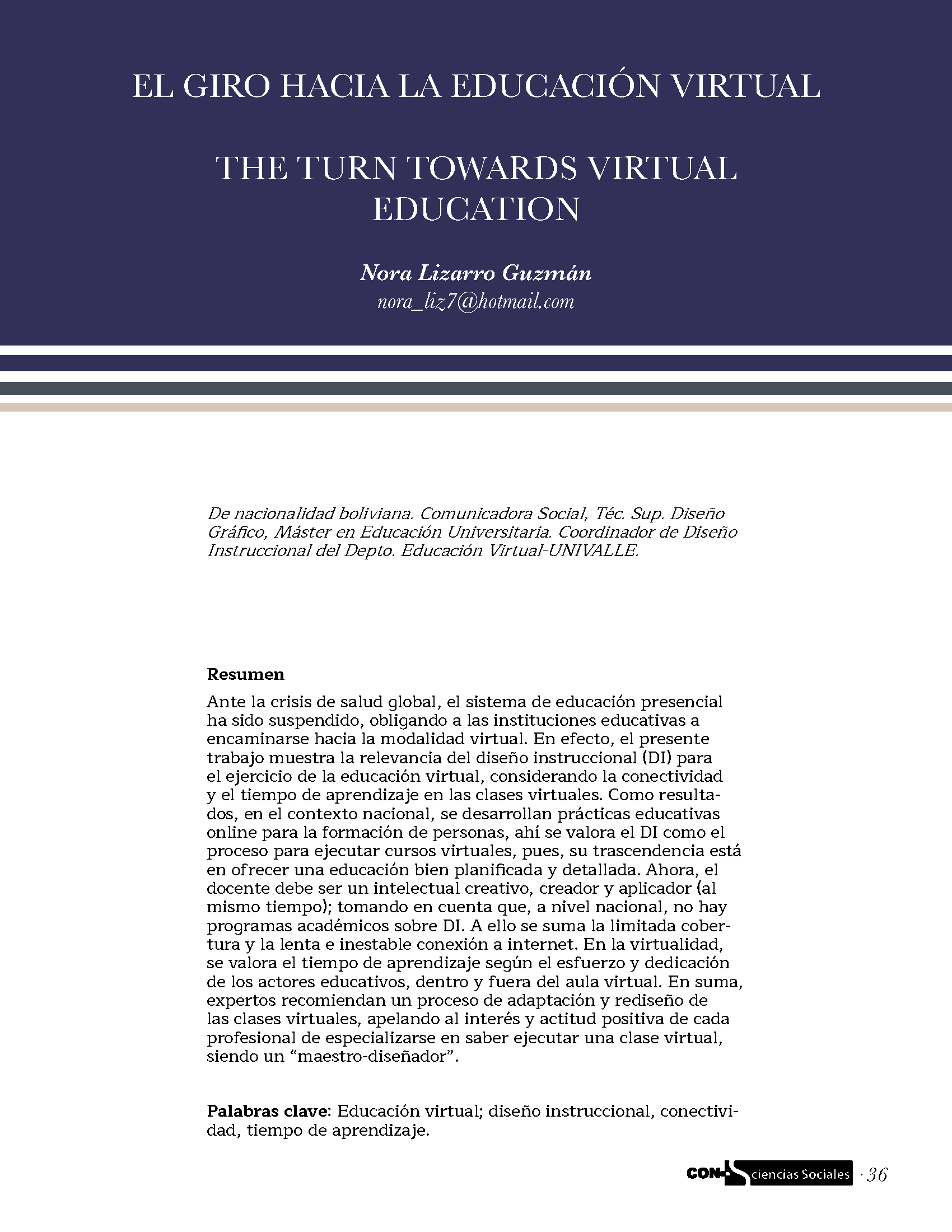The turn towards virtual education
DOI:
https://doi.org/10.35319/consciencias.2020237Keywords:
Virtual education, instructional design, connectivity, learning timeAbstract
Faced with the global health crisis, the face-to-face education system has been discontinued, forcing educational institutions to move towards the virtual modality. Indeed, this work shows the relevance of the instructional design (DI) for the enforcement of virtual education, considering connectivity and learning time in virtual classes. As a result, in the national context, online educational practices are developed for the training of people, there the DI is valued as the process to run virtual courses, since its importance is in offering a well-planned and detailed education. Now, the teacher must be a creative intellectual, creator and applicator (all at the same time); knowing that, at the national level, there are no academic programs on ID. Added to this is the limited coverage and the slow and unstable internet connection. In the virtual contex , learning time is valued according to the effort and dedication of the educational actors, inside and outside the virtual classroom. In short, experts recommend a process of adaptation and redesign of virtual classes, appealing to the interest and positive attitude of each professional so they specialize on how to run a virtual class, being a “designer-teacher”.
Downloads
References
AGETIC (2018). Estado TIC. Estado de las Tecnologías de Información y Comunicación en el Estado Plurinacional de Bolivia. La Paz-Bolivia.
AGETIC (2019). Juventudes TIC. Estudio sobre las TIC en adolescentes y jóvenes de Bolivia. La Paz-Bolivia.
Agudelo, M. (2009). “Importancia del diseño instruccional en ambientes virtuales de aprendizaje”. En J. Sánchez (Ed.). Nuevas Ideas en Informática Educativa. 5. Chile. En http://www.tise.cl/2009/tise_2009/pdf/14.pdf (23 de mayo de 2018)
Argueta, M. y Ramírez, M. (2017). “Innovación en el diseño instruccional de cursos masivos abiertos con gamificación y REA para formar en sustentabilidad energética. Education in the Knowledge Society”. En. https://revistas.usal.es/index.php/eks/article/view/17386 (06 de marzo de 2020) DOI: https://doi.org/10.14201/eks20171847596
Becerra, M. “Por qué no abrimos antes Google Classroom. Anfibia”. En http://revistaanfibia.com/ensayo/no-abrimos-google-classroom/?fbclid=IwAR2RWmZ4tYuWDXkrbFKrl5jW1HF3Lj7Sm6lZw10JOTQdwGAw7MjaUEG4PPU (abril de 2020)
Benítez, M. (2010). “El modelo de diseño instruccional Assure aplicado a la educación a distancia.

Downloads
Published
How to Cite
Issue
Section
License
Copyright (c) 2020 Revista Con-Sciencias Sociales

This work is licensed under a Creative Commons Attribution-NonCommercial 4.0 International License.









